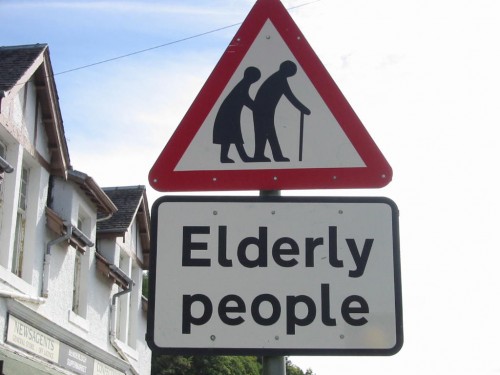
Photo by Ethan Prater on Flickr, thanks for using Creative Commons!
A 2011 study by the Homeless Research Institute of the National Alliance to End Homelessness estimated that the number of homeless senior citizens will increase by 33% in 2020 (from 44,172 in 2010 to 58,772 in 2020) and will more than double from the current number by the year 2050 (to 95,000)—unless something is done to reduce these numbers.
According to Medicare, nearly half of all seniors (48%) live in poverty today, especially in: DC (59%); California (56%); Hawaii (55%); Georgia (54%); Louisiana, New York, Rhode Island and Tennessee (52%); Florida and Mississippi (51%) and Arizona (50%).
Fortunately, chronic homelessness decreased by 3% from 110,911 in 2009 to 107,148 in 2011. And the chronically homeless population has declined by 13% since 2007. The drop is associated with an increase in the number of permanent supportive housing beds from 188,636 in 2007 to 266,968 in 2011. Providing permanent supportive housing ends chronic homelessness.
A study named The State of Homelessness 2012 lays out a roadmap for ending homelessness:
Prevention and rapid re-housing clearly work. This is the lesson of the Homelessness Prevention and Rapid Re-Housing Program, which appears to have forestalled an increase in homelessness, despite the poor economy, high unemployment and lack of affordable housing. With 40% of homeless people unsheltered, the crisis-response system must be improved.
Today, many older individuals with histories of housing stability experience a first-time period of homelessness. Living on limited, fixed incomes—including Social Security and/or Supplemental Security Income—elderly persons experience severe housing cost burdens more frequently than the general population, potentially resulting in housing loss. Twenty-six percent of elderly households were “severely cost-burdened,” versus 20% of all households in 2007. Compounding this, access to affordable senior living can be challenging, with an average wait time lasting about three to five years.
According to one study, common causes of elderly homelessness include: financial problems, mental health problems, relationship breakdown, physical health problems and issues related to work.
Another study identified three non-overlapping reasons for homelessness: “36% said they lost a job and could not find another and/or had problems with drinking; 39% reported discontinued or inadequate public assistance and/or a disagreement with family or friends with whom they were staying; and 25% reported inadequate income and/or illness.
Lack of stable housing has been associated with increased Emergency Department (ED) utilization. Unstably housed adults over age 50 use the ED at rates nearly four times that of the general population. Certain factors among these older patients were associated with making at least four ED visits in the past 12 months: female sex, white race, no usual source of primary care, at least one outpatient visit during the past year, alcohol problem, at least one fall during past year, executive dysfunction and sensory impairment.
Due to prolonged exposure to stress, those living in poverty often experience weathering, causing them to age prematurely by 10 to 20 years beyond their chronological age.
Factors that are significantly correlated with frailty in the older homeless population include: chronological age, being female, increased health care utilization and poorer nutrition scores. Additionally, adverse life events including trauma, drug and alcohol use and incarceration are can place those without stable housing at greater risk for hospitalizations, falls, and premature mortality.
Systems of care must be improved to accommodate the unique needs of older and elderly adults without stable housing. To reduce avoidable ED utilization and improve health status, a study recommends routine screening and counseling on alcohol abuse, addressing common risk factors for falls, increasing access to eyeglasses and hearing aids and connecting patients with housing to decrease acute-care use.
Another study recommends:
Having frontline geriatric nursing triage, shelter-based convalescence or medical-respite facilities, and nurse case management utilizing a chronic-disease self-management program.
Photo: Ethan Prater on Flickr









